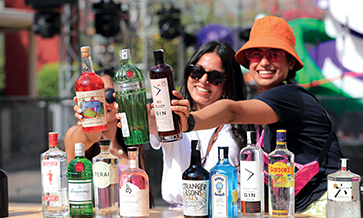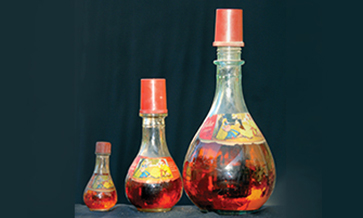With an exciting New Year about to begin, Vikram Achanta undertook some trend-spotting with bar owners, beverage managers and top bartenders from a cross-section of independent and hotel bars. These “watering holes” have been drawn from the metros, as well as Tier-2 and Tier-3 cities. Find out what he discovered…
The tumult in the hospitality industry over the past couple of years is ending, fortunately on a note of explosive growth and expansion. On the one hand Goa is emerging as a new frontier for bars and restaurants, while on the other quality bars and restaurants are emerging in hitherto untapped cities such as Jodhpur and Guwahati.
The cocktail culture is also catching up fast, with cities such as Pune and Kolkata taking the lead over metros like Bengaluru and Chennai.
While gin continues to rule the roost, the rise of Tequila and Mezcal is unquestioned. With agave spirits it is the premium brands that are gaining popularity.
“Consumers get judgemental if you don’t have 1800 or Patron tequila on the menu,” says Vipin Raman of Raahi (Bengaluru) and Jamming Goat (Goa). Santanu Chanda of Delhi’s Home, also points to rum as an expanding consumer category.
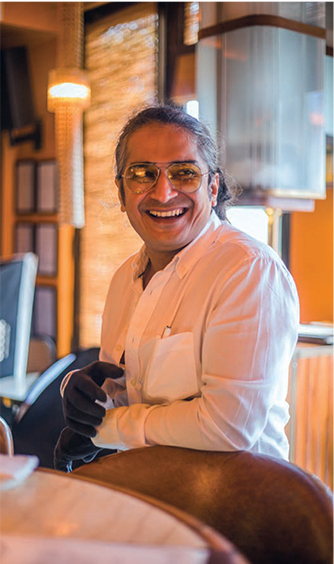
‘Tootsie’, Co-Founder of Miguel’s Cocktails & Pesticos in Panaji, cautions that some craft spirits have overpowering flavours that are difficult to play with in cocktails.
Indian spirit brands have also really come into vogue, with their distribution keeping pace. Old Loco at Jodhpur’s Daspan House, for example, has four Indian brands of gin and single malt respectively.
Sarath Nair at Bengaluru’s Four Seasons also points out a rising preference for limited editions like Trading Tides and Perry Road Peru (both from Stranger and Sons). Santanu also points out that for a change the consumer is making a greater effort to invest their time into understanding various spirits and trying different brands, rather than rely on the old and familiar.
However, Dhruv Tuteja (aka “Tootsie”), Co-Founder of Miguel’s Cocktails & Pesticos in Panaji, has a word of caution for Indian craft spirits producers “Overall, the only thing that is not working is that some craft products have chosen to go with overpowering flavours, and those are difficult to play and create with,” he notes.
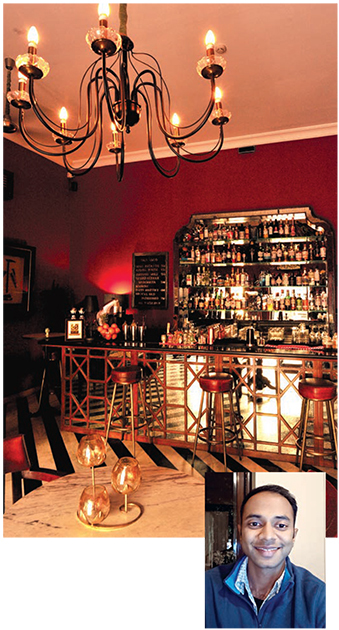
Old Loco, at Daspan House, Jodhpur, serves a Cucumber Collins with wild cucumber, says the Partner at Spruce Hospitality, Varun Jalan (inset).
‘No’ or ‘Lo’?
The implications for multi-national brands are clear, and we are already seeing the signs. On the one hand they’re starting their own Indian craft spirits, such as Diageo’s Godawan single malt, while on the other MNCs are acquiring partial ownership of Indian brands – read Diageo’s stake in Nao Spirits, makers of Greater Than and Hapusa gins.
Expect more of the same in the coming year. Also expect a relentless wave of innovation from Indian brands.
The No-Lo category (no- or low-alcohol beverages) is still very much in its infancy; but low ABV cocktails are gaining popularity. Sarath says that the “better for you” messaging is resonating with more consumers due to the Covid-19 pandemic, and that could be a welcome fillip for this category.
There’s no substitute for evangelism and consistent advocacy for the on-trade if ‘0.0’ beer or No-Lo drinks are to move beyond retail shelves or remain a curiosity on a bar back.
Beer battles
The lack of a good selection of beer brands – especially craft beer – as well as quality Indian wines consistently across India is something that is a cause for concern among our respondents.
“Beer is still a go-to beverage for many because the number of bars serving quality cocktails is limited,” says Vipin. Nicky Ramnani of Pune’s The Daily concurs by saying that beer and wine have their own loyalists.
For beer, while lager and wheat retain pole position, Vipin points to “fruited sours” as a trend in the making. Brewpubs are also constantly experimenting with ingredients, including local ones.
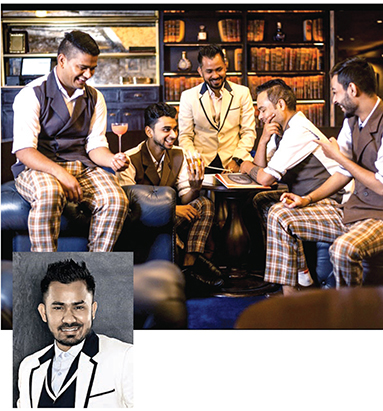
As at Delhi’s Home, bartenders are moving beyond Instagram to invest in education, says mixologist Santanu Chanda (inset).
Guwahati’s Terra Mayaa is planning a Jagermeister ale and an Indian spiced apple cider soon. Bombay Duck Brewing has already launched an interesting collaboration with The Locavore, featuring a series of craft beers using rice. Great State Aleworks in Pune has a series of craft beers that use bajra (millets).
Expect more action from Maharashtra-based production breweries as they open up their own taprooms (Great State Dive) or launch craft beer festivals (Deep Dive).
The name of the game here is how to capture value from the front end of the sale, rather than selling to other bars. More evolved micro-breweries are also entering the packaged beer market, with some bottles and cans already on retail shelves.
Some ‘clarification’
There’s a dichotomy between those who are in favour of the classics and those who point to the rise of trends and techniques. Varun Jalan of Jodhpur’s Old Loco says, “Nearly 95% of our cocktails are classics and made using fresh ingredients. But I see people going crazy over clarification.”
Clarification is a technique that we have seen a lot of in 2022, and it appears to continue to rule the roost as we head into the New Year. Pre-batching and carbonation are also on the rise, as is the use of home-made infusions and tinctures that help a bar go syrup-free and also result in “cocktails that are difficult to replicate”, says Nicky Ramnani.
Tootsie points out that “classics are also a testament to the skill of the person behind a bar, requiring precision, and a deep knowledge of the world of cocktails. Excelling in simple classic cocktails is important to understand balance.”
The evolution of the Indian bartender, however, helps them point both backwards as well as forwards. “They’ve moved beyond Instagram to reading,” say Vipin and Santanu, agreeing that bartenders have begun to invest in education.
Telling stories
A key aspect that strikes a common chord is personalisation of cocktails to suit guests’ preferences. The year 2022 has also seen a few bars literally “drop the menu”, something that then requires a high level of skill, not just with the bar team but also the floor staff.
These signature creations also further help in differentiating one bar from another.
Apart from classics, the one thing that is not going to go out of style and in fact will be of increasing importance is “story-telling”, with stories also drawn from the “roots and pedigree of a bartender”, says Sarath Nair.
One example is that of ‘Seed’, a cocktail from the new menu at Copitas, that uses peanut candy liqueur and is inspired by the nostalgic memory of peanut candy from a Copitas bartender’s hometown.
Rachit talks about “drama and presentation” being important, especially to help cocktail culture take roots in emerging towns like Guwahati.
Abhishek Honawar at Jaipur’s Johri and Sons talks about the Martini trolley as something he sees coming in vogue. With fond memories of the Martini trolley at London’s Connaught, this sure is a great reason to visit Jaipur in the New Year!

While lager and wheat retain pole position in the beer category, “fruited sours” is a trend in the making, feels Vipin Raman of Jamming Goat and Raahi.
Going local
Indian bars and bartenders have begun to relish the use of local ingredients and increasingly forage through their backyards, rather than complain about the lack of an imported spirit/ liqueur or ingredient.
That way ace bar managers and bartenders are also playing to guests’ sense of nostalgia from childhood, as well as the taste of the familiar. “Guests simply love the stories behind these ingredients” says Sarath.
At Jodhpur’s Old Loco they make a Cucumber Collins with balam kakdi (wild cucumber).
Tootsie notes, “The real breakthrough is not in a particular ingredient, but in the fact that there is immense respect for Indian ingredients in the industry today. We are all trying to scratch beyond the surface to find and highlight regional, local and even hyper-local ingredients.”
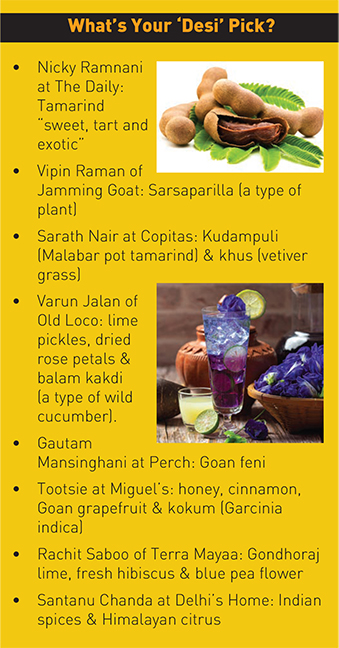
Going ‘green’
The use of Indian ingredients also ties in with another trend: sustainability in the bar world. The use of Indian ingredients that either substitute an imported one or else are used in season plays to some of the core tenets of sustainability.
When it comes to water and energy conservation, Copitas uses foot pedals in the bar and ice as per operational need and in some places old/ bad ice is used to water the plants.
Miguel’s uses state-of-the-art grease traps to ensure they are not a burden on the city’s drainage system.
The big opportunity, and quite literally the low-hanging fruit, is in the reuse and recycling of ingredients. At Jodhpur’s Daspan House, don’t be surprised to find unusual drinks to welcome you, or in breakfast beverage service – they may be by-products of the previous night’s bar operations!
Leftover lemons (or parts thereof) are plugged into use as cordials/ infusions and dehydrated garnishes and saccharums are also common to find. At Terra Mayaa, used coffee is diverted towards garnish powdering, and beer wastage sent to salons for a beer wash.
Behind bars
All efforts and ingenuity can only work if we have a high performing bar team. Therein lies the rub, for there is a growing scarcity of bar talent, especially with more and more specialty bars or gastro-pubs opening in different parts of the country.
Some top talent from bars such as Quorum, Sidecar and Lair has moved overseas for education, or to find their fortunes elsewhere. The growing demand for “brand ambassadors” has beverage brands, both local and multi-national, on a constant lookout. Barely has a bartender won a competition of note, than he/ she is gobbled up by a brand.
Vipin (Raahi) says, “The lack of good mentorship programmes and the ‘pay less’ mind-set of bar owners urgently needs fixing. “There must be a way to keep our top talent inspired and engaged,” chimes in Sarath.
But Tootsie sees a flip side to it. “It is good that some of the stigma previously attached to this industry has lifted, and some bartenders are becoming mini-celebrities in their own right.
“The evolution from bartenders to bar owners and brand creators has also shown that there is life beyond the bar. What one hopes for is that this young talent is not snatched away from the bar too soon,” he adds.
What is also disconcerting is the absence of diversity, especially when it comes to women and minorities. Very little is being done to fill this gap. No easy answers, I know, but I feel we are on the brink of a looming crisis.
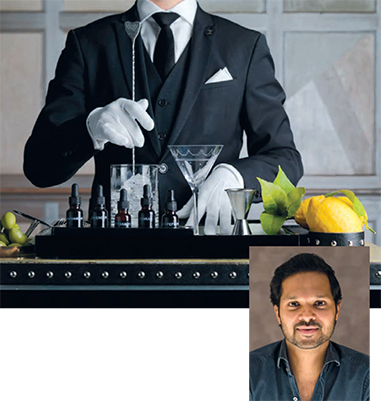
Abhishek Honawar at Jaipur’s Johri and Sons (inset) talks about the Martini trolley coming in vogue.
Hinterland attraction
What is also compounding the war for talent is the size of the Indian market. A country like Thailand or Indonesia may have two or three main centres when it comes to a high performing bar industry.
In India, quite apart from the metros, you also have Tier-2 and Tier-3 cities and towns that are being driven by aspirations of consumers there and savvy restaurateurs.
The persistent lure of social media makes a consumer in Lucknow or Udaipur want a drink similar to what are being enjoyed in Delhi or Mumbai. Nicky (The Daily) says, “Scanning the menus of the best bars in India and the world opens you up to change and growth.”
There is consensus across our respondents that there is enormous potential in India’s Tier-2 and Tier-3 cities. Vipin Raman says, “From a business point of view it’s safer, low risk and hassle-free as opposed to a larger city.”
Sarath also credits platforms like ‘30 Best Bars India’ that are finding those hidden bars in small cities and helping the community to drink better. “People are making discoveries in their own backyard,” he notes.
Tootsie’s take? “Apart from a business opportunity, we also get to learn about a whole new set of customers and how to cater to them in the best possible way. We even start to pick up ingredients, priorities and loved preparations from different parts of India,” he notes.
I recently heard about a Kolhapur-based restaurateur who used to frequently visit Pune and take back kegs of craft beer to sell at his restaurant. This passion for freshly brewed beer is apparently now likely to see shape via him opening his own micro-brewery there. Such has already been the case in Vijaywada, Lucknow and Puducherry.
Santanu Chanda is no stranger to the global bar scene and is a frequent visitor to some of Asia’s biggest cocktail destinations, where he hosts guest shifts in top bars. His opinion that the Indian bar scene is phenomenal and “nothing less than big Asian cities in terms of talent, creativity and innovation” definitely counts for a lot.
The portents for bars in India are definitely favourable. What may play spoilsport is the lack of bar talent. One certainly hopes that the industry rises to this challenge and restaurateurs and hoteliers make it worth the while for young talent to work, and stay on the bar.













